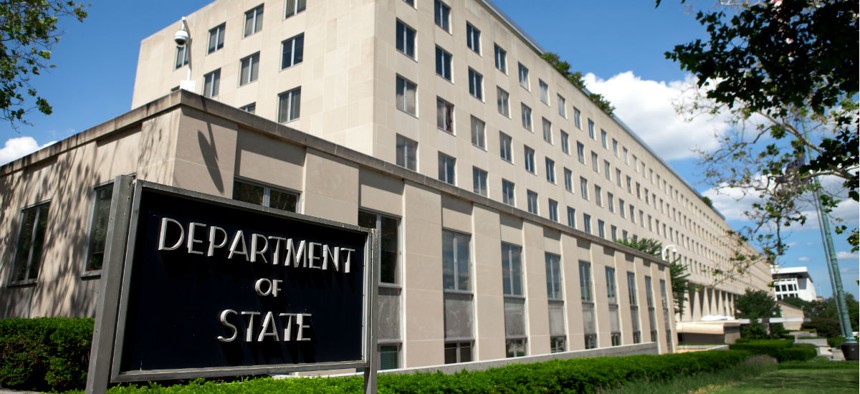
Mark Van Scyoc/Shutterstock.com
State Department Student Interns Battle a Frustrating Security Clearance Process
Some applicants wait months for even an interim clearance.
Hiring managers recruiting entry-level talent know they don’t just have to sell young people a job, they have to convince them to embark on a hiring process that will push them far outside of their comfort zone. The question isn’t just how can we attract the best talent to government? The question is how can we attract the best students to even consider government, and the cumbersome security clearance process involved?
The security clearance process required for many government positions has never been easy. It’s designed to protect classified information and the interests of the government. But today’s security clearance processing delays are particularly frustrating for young people applying for positions.
A few years ago you could expect an interim security clearance determination in days and a final determination in months. Now you may wait months for even an interim clearance. And the process isn’t likely to get better soon. The National Background Investigations Bureau took over security clearance processing last year and they’ve recently confirmed that new procedures mean 2-3 day determinations are a thing of the past.
If you wonder how this is affecting students, look no further than the Department of State’s Student Programs Forum. It is designed for students interested in careers with the State Department. The vast majority of posts come from students who have already been accepted into a department program but are left waiting on a security clearance determination. They must have a security clearance in order to do the job and don’t know what to do in the months-long waiting process.
Everyone Wants a Little Feedback
There has been a ridiculous amount of research done on millennials in the workforce. A lot of it is bunk. One thing I do agree with: younger employees (regardless of generation) will generally seek out more feedback throughout a process than older workers. A 2016 Gallup poll noted that managers should try to connect with their employees every day. How much feedback do you generally receive during the security clearance application process? Often zero. Absolutely no updates, even if your process creeps into months or years.
If you do get feedback, it comes third party through a Facility Security Officer. If you’re a student applicant, you likely don’t even have access to that resource. That means you’re in complete limbo while you await a final determination. That’s unacceptable in an era when you can track your Uber driver’s progress in real time.
Students on State Department forum often have to get creative to figure out where their application may be in the process, from checking in with references, to scouting out an investigator leaving their school. If you’re doing your own field work to track your clearance process, it’s clear the government is doing it wrong.
The need to invest in security clearance IT is something NBIB Director Charles Phalen continually cites. And it can’t come soon enough. An applicant should, at the very least, be able to access a website that can advise him or her where their application is in the process.
Lindy Kyzer is the editor of ClearanceJobs.com and a former Defense Department employee.
Image via Mark Van Scyoc/Shutterstock.com.






